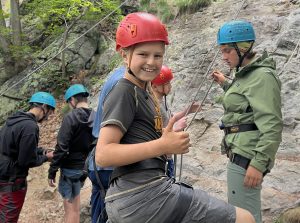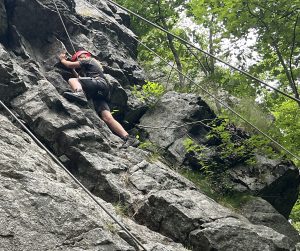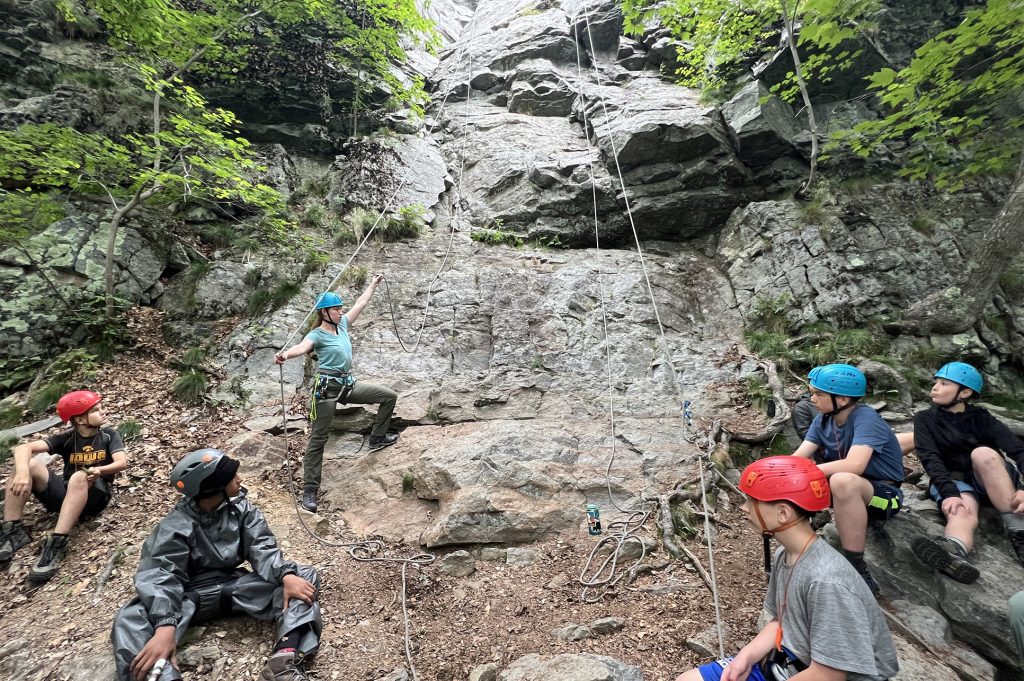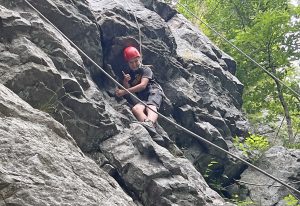
Minutes after hiking several miles in the wilderness with a 45 pound pack on his back, 12 year old Riehle (“Riley”) is beaming with excitement in anticipation of what comes next.
“I’ve never done rock climbing before, but I think it’s going to be really fun!” said Riehle.
Not all members of the crew are as eager as he is.
At the start of their course, most Outward Bound participants have a sense that they are about to engage in challenging, even risky, activities. They may have heard that they will “step out of their comfort zone.” To many, rock climbing is perceived as the high-adrenaline, high-risk activity that pushes them across the comfort zone boundary.
For that reason, Outward Bound program progressions are designed to prepare students, technically and emotionally, for this peak moment of excitement, challenge, and fear.

In his book, Alone on the Wall, all-world rock climber Alex Honnold explains, “I’ve done a lot of thinking about fear. For me the crucial question is not how to climb without fear – that’s impossible – but how to deal with it when it creeps into your nerve endings.”
When the fear creeps in, you are beginning to step out of your comfort zone. But stepping out of your comfort zone involves knowing where your comfort zone lies, and that will vary from student to student.
This is where Challenge by Choice comes in. Challenge by Choice is a core tenet for how we frame rock climbing at POBS for our participants. It involves students deciding on their own, without instructor or peer pressure, to take on a challenge. The instructor and other participants respect anyone’s right to sit out or to opt for a personalized level of engagement.
Essentially, this means we place no emphasis on how high or fast students climb a rock wall; and in certain instances, if they even climb at all. For some, just putting on a harness and belaying a climber is an appropriate level of challenge, and that’s perfectly fine! The important thing is that students are aware of when they are challenged and on the edge of their comfort zone, and then attempt to expand the boundary from there.


Riehle’s crew encapsulate the challenge by choice process. Some climbed to the top, some opted just to belay a crewmember and not climb, and some, like Riehle himself, split the difference and made it part way up the rock face.
Rock climbing not only helps students find and step out of their comfort zone, it teaches them to perform under pressure in a supported environment, with the idea that they can then apply what they’ve learned in their own lives away from the rock wall.
But the best part? Take it from Riehle: “That was fun!”
